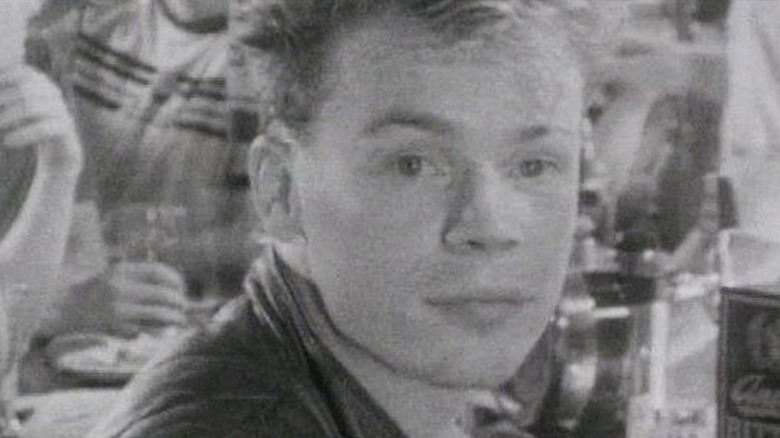The Director Of Horror Classic Candyman Got His Start In The Wildest Way Possible

“Candyman” was first concocted by horror maestro Clive Barker in the form of a short story called “The Forbidden.” Released as part of the fifth volume of his “Books of Blood” series, the story was eventually transformed into what would become Bernard Rose’s 1992 hit slasher and remains one of the best horror movies ever made. The figure of Candyman, played famously by Tony Todd, has transcended into the realm of iconic — and spawned a franchise featuring three direct sequels throughout the ’90s and Nia DaCosta’s criminally underrated “Candyman” from 2021. The importance and impact of the original “Candyman” cannot be overstated, and Bernard Rose’s keen eye and unique grasp of presenting the horrors of an urban legend come to life has been sparking nightmares for over three decades.
Before Rose stepped into Cabrini-Green with the dulcet tones of Philip Glass’ score, he directed films like “Smart Money,” “Body Contact,” and the dark fantasy flick “Paperhouse,” but he got his start directing music videos. He helmed Frankie Goes to Hollywood’s two biggest music videos, “Welcome to the Pleasuredome” and the uncensored version (aka the hot gay one) of “Relax.” He was also responsible for Bronski Beat’s “Smalltown Boy” music video, a song that’s been given new life recently thanks to its inclusion in the marketing campaign for “Love Lies Bleeding.”
But Rose’s first gig was directing the “Red Red Wine” music video for the reggae-pop band UB40, and as he explained on a 2014 episode of horror directors Adam Green and Joe Lynch’s “The Movie Crypt” podcast, he got the job under the wildest circumstances imaginable. This truly unbelievable story of happenstance started a butterfly effect that would end up with him changing horror forever.
‘Is there anybody there who could make me a music video?’
Bernard Rose had his first guest appearance on Episode 78 of “The Movie Crypt,” which is now only available through their “Classic Crypt” series available to Patreon subscribers (link at the bottom of this article), but when the episode premiered in November of 2014, I was listening to it live. It was only after the announcement of Rose’s upcoming “King Lear” adaptation, “Lear Rex” (with Ariana DeBose, Rachel Brosnahan, Peter Dinklage, LaKeith Stanfield, Chris Messina, Ted Levine, Danny Huston, Matthew Jacobs, Rhys Coiro, Stephen Dorff, Al Pacino, and Jessica Chastain), that I learned Rose’s industry breakthrough story wasn’t common knowledge.
“I had quite a big career in music videos before I started making movies and it was very much the early days of MTV […] and even the record companies hadn’t organized themselves yet,” Rose explained. “You used to go to the record company, collect half the money in advance, and then a week later you’d show them the video and they’d give you the second half of the money.” It’s a far cry from the massive events that music video production would become later in the decade. Record companies didn’t want to make music videos, but the explosion of MTV forced their hand.
Rose was a student at the National Film and Television School in the U.K., working on the edit for his graduation film when a phone rang. Not a specific phone connected to an office or a professor, just a payphone in the hallway (it was the 1980s!) that kept ringing and ringing. Finally, Rose picked it up, and on the other end was Brian Travers, the saxophone player of UB40.
Without seeing anything Rose had ever made or even knowing his name, Travers asked him to meet him in Birmingham the next day. Rose showed up.
From letterboxed videos to legendary horror status
UB40 had no desire to make a music video, but the record company told them they had to for the song “Red Red Wine.” Wanting to do it on the cheap, they figured they could hire a film student and shoot the video at their favorite pub, The Eagle and Tun. Rose had access to his university’s equipment, so he joined the band the following weekend to shoot the video. Shot in black and white, the video is extremely cinematic, using a letterboxed format. The BBC originally rejected the video, claiming the letterboxing would make people at home think something was wrong with their television sets.
And then “Red Red Wine” became a massive hit.
Because the song skyrocketed to the top of the charts so quickly, there weren’t any recordings of the band playing the song outside of the music video. This posed a particular challenge for “Top of the Pops” who didn’t want to play the video but had to play the #1 song in the U.K. on their weekly show, so they tried to get the band to come down to record a performance. The band decided to fly to different countries so they couldn’t be in the same place at the same time to record a performance in protest. This forced “Top of the Pops” to play the music video as is, with the letterboxing, and the scope would inspire countless videos to do the same. And now that TVs are no longer squared in 4:3, letterboxed music videos have aged beautifully.
To hear the full interview (and Bernard Rose’s fantastic impression of Brian Travers), the episode is part of the “Classic Crypt” tier of The Movie Crypt Patreon. Additionally, the “Candyman” commentary track the director conducted with Green and Lynch for their annual YORKIETHON fundraiser was subsequently made a part of the Scream Factory “Candyman” Collector’s Edition Blu-ray release.
Source link





